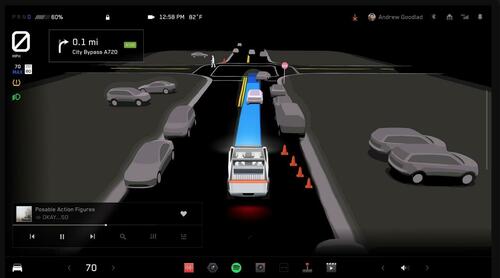Tesla Faces Another ‘Full Self-Driving’ Probe By NHTSA Over Crashes In Low-Visibility Conditions
Tesla faces a new round of investigations by the National Highway Traffic Safety Administration, or NHTSA, following reports of four crashes, including one fatal incident, involving its Full Self-Driving (FSD) software in low-visibility conditions.
“The Office of Defects Investigation (ODI) has identified four Standing General Order (SGO) reports in which a Tesla vehicle experienced a crash after entering an area of reduced roadway visibility conditions with FSD -Beta or FSD -Supervised (collectively,” NHTSA wrote in an investigation.
NHTSA continued, “In these crashes, the reduced roadway visibility arose from conditions such as sun glare, fog, or airborne dust. In one of the crashes, the Tesla vehicle fatally struck a pedestrian. One additional crash in these conditions involved a reported injury. The four SGO crash reports are listed at the end of this summary by SGO number.”
This preliminary evaluation is the latest setback for Tesla’s FSD efforts. More than 2.4 million Tesla Model S, 3, X, Y, and Cybertrucks are on US highways and roads.
The investigation centers around FSD:
The ability of FSD’s engineering controls to detect and respond appropriately to reduced roadway visibility conditions;
Whether any other similar FSD crashes have occurred in reduced roadway visibility conditions and, if so, the contributing circumstances for those crashes; and
Any updates or modifications from Tesla to the FSD system that may affect the performance of FSD in reduced roadway visibility conditions. In particular, this review will assess the timing, purpose, and capabilities of any such updates, as well as Tesla’s assessment of their safety impact.
“Weather conditions can impact the camera’s ability to see things and I think the regulatory environment will certainly weigh in on this,” Jeff Schuster, vice president at GlobalData, told Reuters, adding, “That could be one of the major roadblocks in what I would call a near-term launch of this technology and these products.”
Tesla states on its website, “Visibility is critical for Full Self-Driving (Supervised) to operate. Low visibility, such as low light or poor weather conditions (rain, snow, direct sun, fog, etc.) can significantly degrade performance.”
“Full Self-Driving (Supervised) is a hands-on feature. Keep your hands on the steering wheel at all times, be mindful of road conditions and surrounding traffic, and always be prepared to take immediate action,” Tesla continued.
It warned, “Failure to follow all warnings and instructions can result in property damage, serious injury or death.”
Tesla has faced multiple NHTSA probes involving FSD this year (read here & here). It’s likely that Tesla will issue an over-the-air update to satisfy government investigators.
Also, Tesla recently beat a lawsuit alleging its top execs overstated investors about FSD claims.
Tyler Durden
Fri, 10/18/2024 – 11:10




Share This Article
Choose Your Platform: Facebook Twitter Linkedin